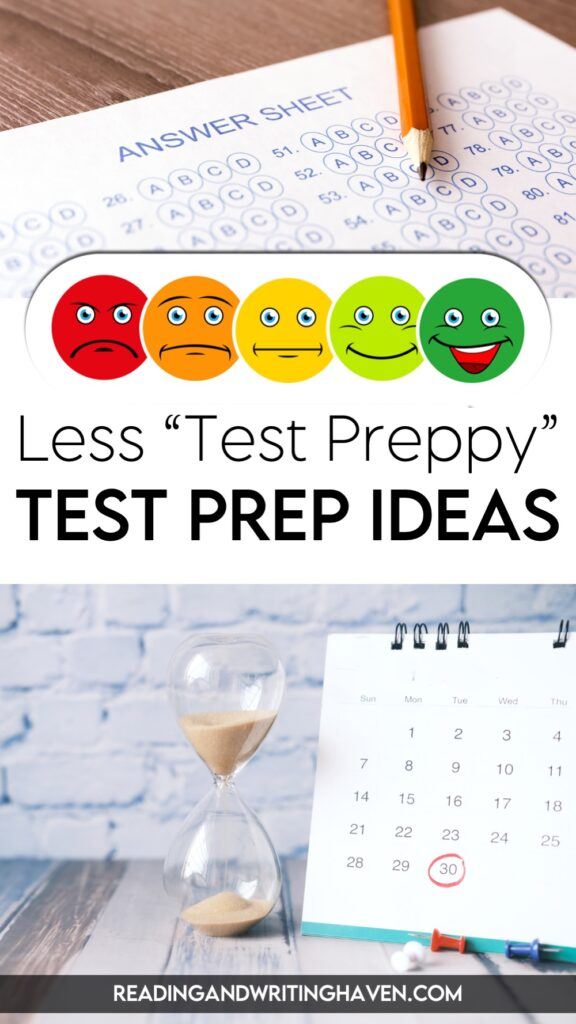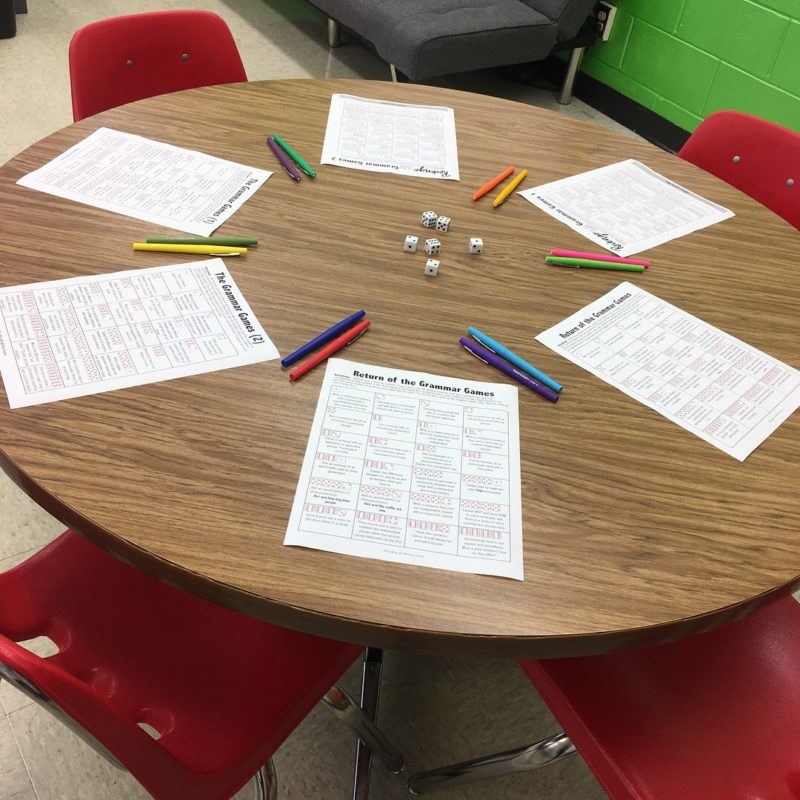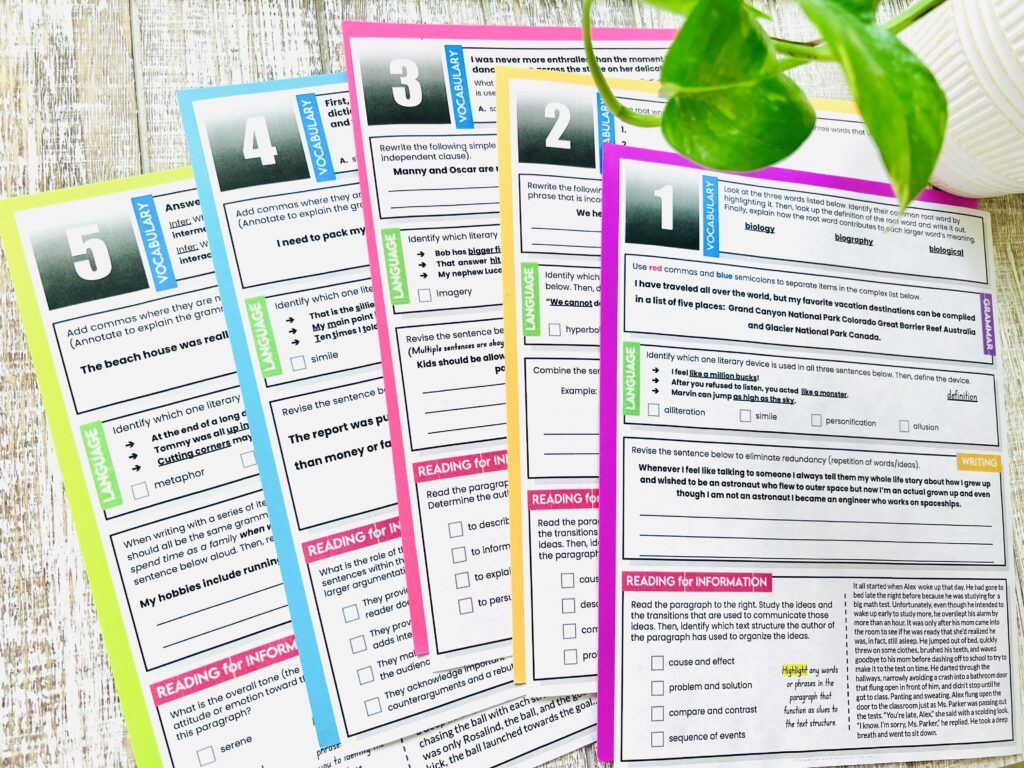6 Simple Ways to Make Test Prep Activities Less Boring
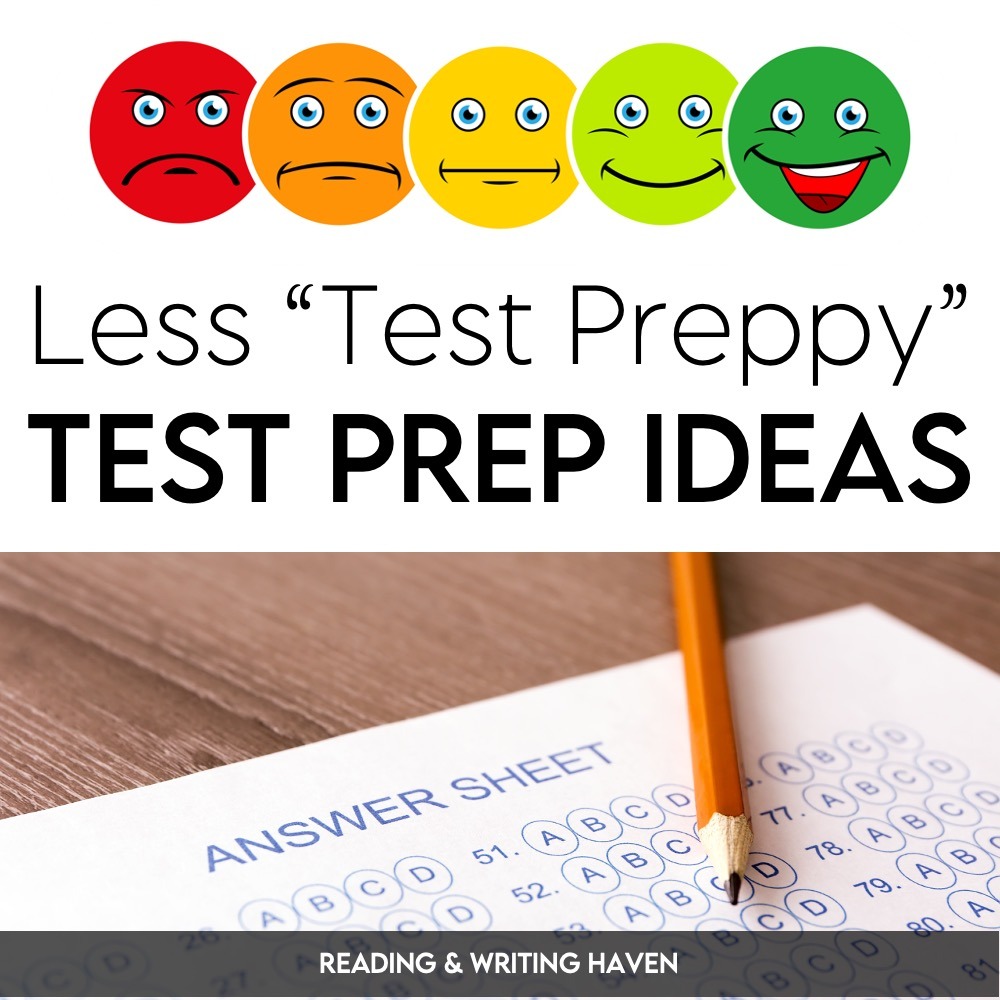
State testing season is upon us…or maybe not? Perhaps you’re one of those teachers who plans ahead and incorporates best practice test prep activities all year long. Either way, test prep is best when it doesn’t feel so…preppy. You know what I mean. The multiple choice, drill and kill type of monotony that makes everyone’s eyelids heavy.
Test prep can be MORE than what we stereotypically picture. “Bueller? Bueller?” For those who haven’t seen Ferris Bueller’s Day Off, this quote refers to a scene during which the teacher takes attendance in the most monotone voice one could muster, and the students are likewise not one bit engaged. Test prep does not need to mimic this scene!
So, if you’re sitting with a clean slate of a lesson plan and testing is on your mind, let’s explore some options that may spice up test preparation season this year.
1. Make it a Game
By the time testing season is upon us, we’ve normally covered the majority of key standards students will see on the state exams, which means it’s the perfect time to review! I love incorporating games as test prep. Students can play a variety of grammar, vocabulary, reading, and figurative language games somewhat independently while the teacher is available to run interventions or enrichment with smaller groups.
Pro Tips: To do this, you’ll want to avoid a couple common mistakes!
First, students will need to have access to the right answers so they aren’t repetitively reinforcing an error. For example, you can make them available by posting them on a wall in the room and having specific times when students should review their answers to determine winners.
Secondly, you’ll want to use the instructional time that is freed up to support students who have common needs. I like to use information from last year’s test (and my own knowledge of the students) to determine which skill areas they may need a refresher with before state tests. To illustrate, our test will tell us if students scored low in reading literature, reading informational texts, vocabulary, written expression, and writing conventions. Based on my knowledge of my state standards, the test structure itself, and what I know I’ve taught, I would host a 10 minute review lesson for small groups of students while others play the game.

2. Turn it into 4 Corners
Take any multiple choice-style question, and turn it into a movement activity. Simply place the letter choices for the answers (typically A, B, C, and D) around the room. Then, project the practice test question AND read it out loud for students so they can access it in both modalities. While they may not have access to an audio for questions during testing, they will be better prepared by practicing with access to both.
Be sure to tell students this is a silent activity! If you think students will be too easily swayed to move to the same corner as their friends, print out four index-sized cards with letters on them for each student. (You can also just use four different colors of paper and match the corner letters to those colors.) Then, require students to hold one up in the air with their eyes closed before walking to their corner.
Once students are in their corners, ask them to discuss why they chose their answer, citing specific evidence to support their choice. If students can handle standing during a whole-class follow up discussion about the correct answer, have them remain in their corners. If they cannot, ask students to quickly be seated before reviewing the question together.
Pro Tip: Some test questions say “choose multiple” answers. To practice this concept, you can tell students they can stand midway between or among their answer choices.
3. Make it a Manipulative
Many state tests that are digital (which is most of them!) now have a few virtual manipulation questions. Students may be asked to drag and drop, sort in a correct order, or fill in a blank by dragging answers to the correct spots. Make practicing these tricky types of questions more engaging by turning them into physical manipulatives. We can ask students to sort answers, drag and categorize them, and fill in blanks with pieces of paper.
Students are often asked to sort details that support the central claim of a text or identify details that are important enough to belong in an objective summary.
Pro Tip: If possible, have students who are in a study hall with no homework to do help you to prep the manipulative materials ahead of time!
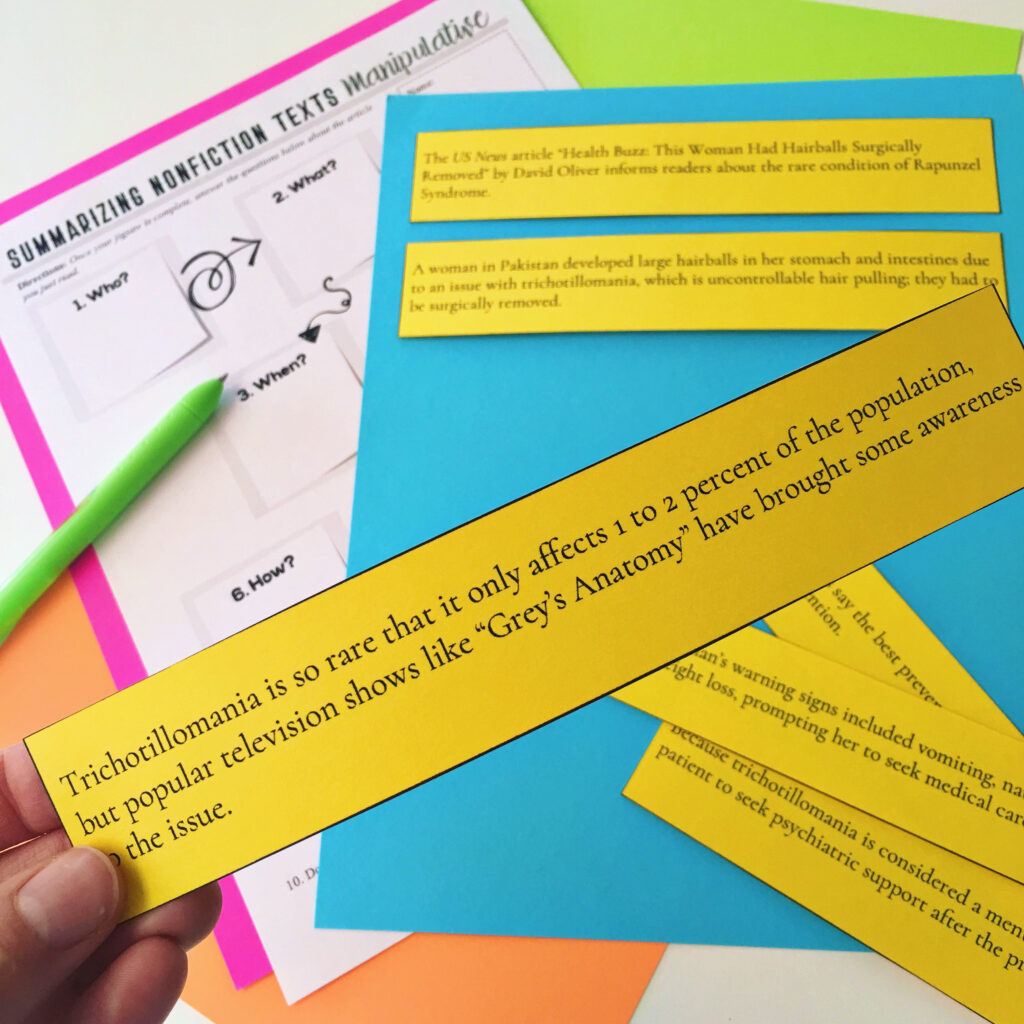
4. Build it into Spiral Review
Each day during the month or two leading up to testing, have students complete some core skill builders. These can be incorporated as bell ringers, station activities, or daily work. The idea is to structure the review around the standards you are wanting students to show mastery of on the test! I like to build in questions about all of the major ELA standard domains: language (vocabulary and grammar), reading information, reading literature, and writing. I don’t include anything for speaking and listening as those are not tested on our state exams.
Pro Tip: These can take a while to make. Here are the spiral review sets I have created if you are short on time! You can also have students create their own spiral review questions to use for review.

5. Create Writing Challenges
Half the battle with test prep writing is getting students to understand the prompt. The other half is convincing them to spend time writing enough that they will sufficiently answer the question!
So try giving students a prompt and a large sticky note (like one from an easel pad) and teach them how to do two things. First, make sure they know how to annotate a writing prompt. Here are three easy steps to annotate a writing prompt:
- Underline the text(s) you must cite in the essay.
- Circle the literary element(s) you need to analyze.
- Rewrite the writing goal in your own words. (So you understand what you are doing!)
Secondly, make sure they know how to create a basic graphic organizer to plan their ideas. You’ll need to model this for students. It’s okay to do it during “test prep season” or all throughout the year! Students always benefit from knowing how to create their own graphic organizers.
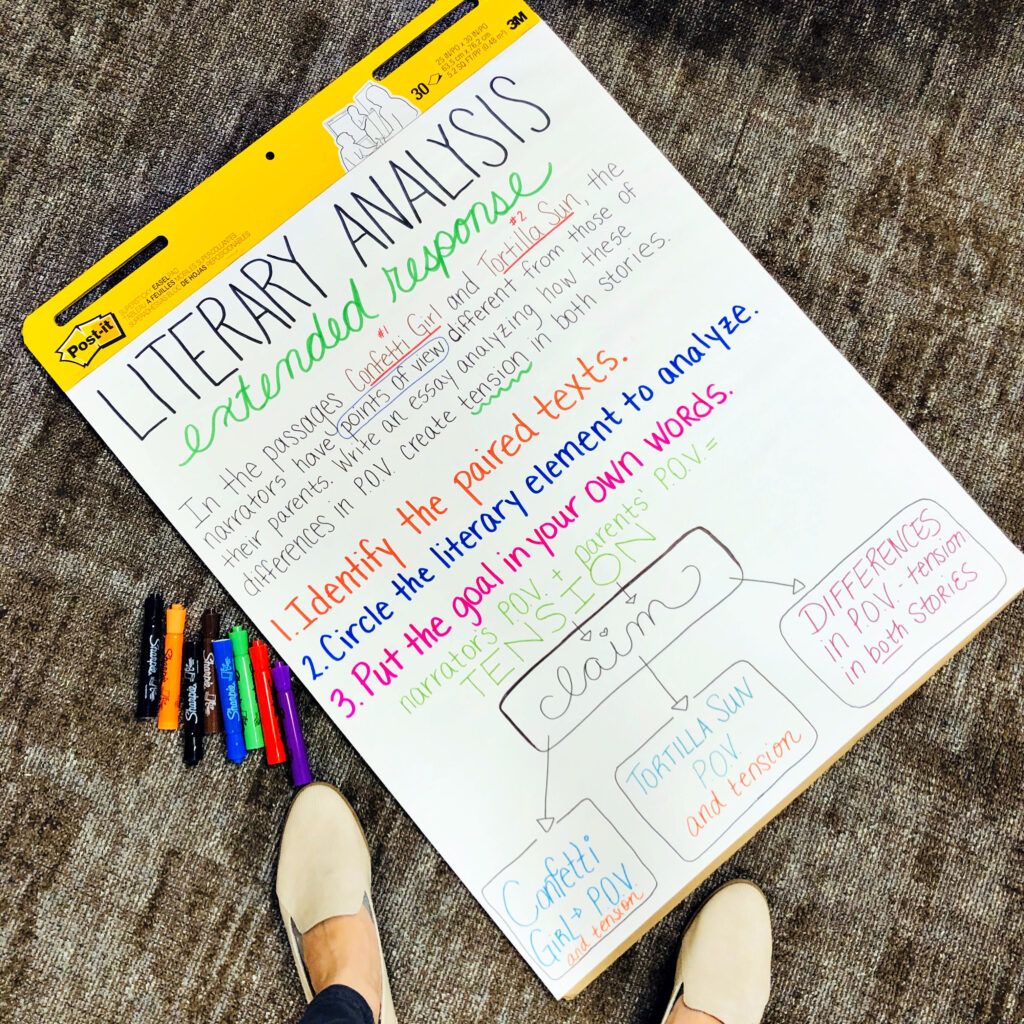
Now, gamify it.
Then, start turning these tasks into challenges! Once students know how to annotate and create a brainstorming organizer, place students in groups and get out your timer! Hand out the same prompt to each group (use large fonts, and choose prompts that are from released tests to save you time), and give students a certain amount of time to complete the annotation and brainstorming.
When time is up, have students rotate around the room, noting things other groups came up with that are DIFFERENT but add value to what their own group thought of. Celebrate bright insights by having students give other groups “props” (you can record these as stars or tallies on the board, or you can make them less numerical by simply using claps or snaps). Complete however many rounds you can while students stay engaged with the task. Or, complete one each day during the weeks leading up to your state testing.
Pro Tip: Be sure to maximize the teachable moments of this activity by emphasizing for any ideas that would elevate the scoring level on state testing. Discuss these lightbulb moments as a class after the activity is over!
You can read more about standardized test writing prep in this blog post.
6. Create Reading Challenges
Of course, this challenge idea could work for reading as well! One of the hardest parts of state testing is that students may be reading texts they have no background knowledge about, that may be above their reading level, or that they may not be interested in.
To practice stamina and grit, give students passages from previously released tests for your state exam, and then have them work in groups of three to comb through and discuss questions about complex texts. Here are some examples of questions you may pose to them:
- What do you already know about this topic or related to it? (for nonfiction)
- What is the central idea of this text? (for nonfiction)
- What words give you an idea about the author’s perspective on the topic? (for nonfiction)
- What is the meaning of the word ____ as it is used in paragraph ____? (for fiction or nonfiction)
- How does the setting impact the character’s actions? (for fiction)
- How does the character impact the events of the plot? (for fiction)
- How does the point of view impact the theme? (for fiction)
You can find additional question frames in your state’s released items.
Add some fun…
Teach students to use the answer eliminator feature on the test by giving them a “point” for every wrong answer they cross out on the practice questions. Give them additional points for any text annotation they add in the margins. (Most tests will not allow students to annotate, but we still want them to think like this as they read on their devices!) You can award points for anything you want to emphasize as an important test-taking skill.
To simplify the point system, you can keep track of whole class points and reward students each time they “level up.” For example, once the class reaches Level 2, maybe they have earned 10 minutes of extra reading time or 10 minutes of ambient lighting and vocabulary coloring time. Level 3 may mean each student gets a Jolly Rancher. Level 4 may mean getting to doodle as they listen to a 6 minutes story podcast or watch a few “How it’s Made” youtube video shorts. You can use whichever meaningful motivators you think would inspire your students as they work through the challenges productively.
I hope these ideas have given you some inspiration for filling out the details of your test prep lesson planning! Remember, test prep activities can be easy and effective without being boring! Use these six simple yet powerful strategies to turn your review into magic.
